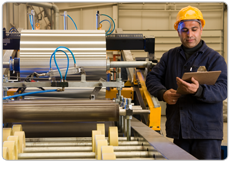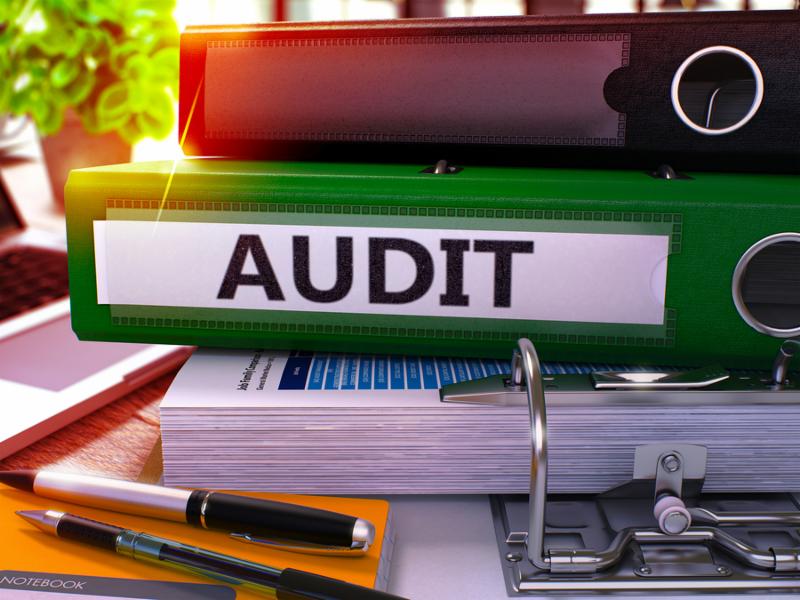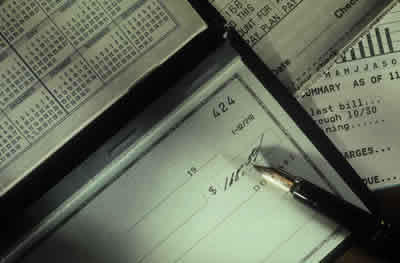Do you qualify for the California Manufacturing, Research & Development Tax Exemption?
 Beginning on July 1, 2014, manufacturers and certain research and developers may qualify for a partial exemption of sales and use tax on certain manufacturing and research and development equipment purchases and leases. To be eligible for this partial exemption, you must meet all three of these conditions:
Beginning on July 1, 2014, manufacturers and certain research and developers may qualify for a partial exemption of sales and use tax on certain manufacturing and research and development equipment purchases and leases. To be eligible for this partial exemption, you must meet all three of these conditions:
- Be engaged in certain types of business, also known as a “qualified person.”
- Purchase “qualified property.”
- Use that qualified property for the uses allowed by this law.
Get it in Writing
The California BOE tax and fee laws can be complex and difficult to understand. If you have specific questions about this exemption and who or what qualifies, we recommend that you get answers in writing from the BOE. This will enable us to give you the best advice and will protect you from tax, penalties and interest in case we give you erroneous information.
Requests for written advice can be emailed to the Board of Equalization (BOE) or mailed directly to the BOE field office nearest you.
For more details, please see publication 8, Get It in Writing!
Qualifications
The list of criteria to qualify for the manufacturing exemption can be quite complex. We suggest you take the time to determine if your business and purchases or leases qualify.
Qualified person
A “qualified person” means a person who is primarily engaged (50 percent or more of the time) in those lines of business described in the North American Industry Classification System (NAICS) Codes 311100 to 339999, inclusive, 541711, or 541712 published by the United States Office of Management and Budget (OMB), 2012 edition. (See Understanding Your NAICS code on Industry Topics tab)
These industries generally include those primarily engaged in the business of all forms of manufacturing, research and development in biotechnology, and research and development in the physical, engineering, and life sciences.
A qualified person may be “primarily engaged” either as a legal entity or as an establishment within a legal entity.
To be primarily engaged as a legal entity or as an establishment you must, in the prior financial year, either derive 50 percent or more of gross revenue (including inter-company charges) from, or expend 50 percent or more of operating expenses in a qualifying line of business. For purposes of research and development activities, revenues could be derived from, but are not limited to, selling research and development services or licensing intellectual property resulting from research and development activities. (See Research & Development on Industry Topics tab)
Alternatively, an establishment is primarily engaged if, in the prior financial year, it allocates, assigns or derives 50 percent or more of either of the following to a qualifying line of business: (1) employee salaries and wages, (2) value of production, or (3) number of employees based on a full-time equivalency.
In cases where the purchaser was not primarily engaged in qualifying manufacturing or research and development activities for the preceding financial year, the one year period following the date of purchase of the property may be used.
“Qualified person” does not include:
- An apportioning trade or business that is required to apportion its business income pursuant to subdivision (b) of RTC section 25128.
- A trade or business conducted wholly within this state that would be required to apportion its business income pursuant to subdivision (b) of RTC section 25128 if it were subject to apportionment pursuant to RTC section 25101.
In general, these apportioning trades or businesses derive more than 50 percent of their gross business receipts from an agricultural business activity, an extractive business activity, a savings and loan activity, or a banking or financial business activity as defined in subdivision (d) of RTC section 25128.
Qualified Tangible Personal Property
“Qualified tangible personal property” includes, but is not limited to:
- Machinery and equipment, including component parts and contrivances such as belts, shafts, moving parts, and operating structures.
- Equipment or devices used or required to operate, control, regulate, or maintain the machinery, including, but not limited to, computers, data-processing equipment, and computer software, together with all repair and replacement parts with a useful life of one or more years, whether purchased separately or in conjunction with a complete machine and regardless of whether the machine or component parts are assembled by the qualified person or another party. (See Useful Life on Industry Topics tab)
- Tangible personal property used in pollution control that meets standards established by this state or any local or regional governmental agency within this state. (See Pollution Control on Industry Topics tab)
- Special purpose buildings and foundations used as an integral part of the manufacturing, processing, refining, fabricating, or recycling process, or that constitute a research or storage facility used during those processes. Buildings used solely for warehousing purposes after completion of those processes are not included. (See Special Purpose Buildings on Industry Topics tab)
“Qualified tangible personal property” does not include:
- Consumables with a useful life of less than one year.
- Furniture, inventory, and equipment used in the extraction process, or equipment used to store finished products that have completed the manufacturing, processing, refining, fabricating, or recycling process.
- Tangible personal property used primarily in administration, general management, or marketing.
Leases of qualified personal property may also qualify for the partial exemption. If the lease qualifies, any payments that are due and paid in the eligible period, July 1, 2014 through June 30, 2022, qualify for the partial exemption regardless of the lease inception date. (See Leases on Industry Topic tab)
Qualified Uses
The tangible personal property must be used primarily (more than 50% of the time) in one of the following manners:
- Any stage of the manufacturing, processing, refining, fabricating, or recycling process
- Research and development
- To maintain, repair, measure, or test any qualified tangible personal property described by the above, or
- For use by a contractor purchasing that property for use in the performance of a construction contract for a qualified person, provided that the qualified person will use the resulting improvement to real property as an integral part of the manufacturing, processing, refining, fabricating, or recycling process or as a research or storage facility for use in connection with those processes. (See Construction Contractor on Industry Topics tab)
For purposes of this exemption, the manufacturing process begins from the point you receive raw materials and introduce them into the manufacturing, processing, refining, fabricating, or recycling activity of the qualified person and ending at the point at which the activity has altered the product to its completed form, including packaging, if required.
The law provides that operational equipment (i.e. computers, tablets, printers, servers) used to run the manufacturing equipment are eligible for the exemption under this program provided they are used for qualifying activities. Even though your primary NAICS code is eligible for the exemption, purchases made for other activities of your operations (i.e. distribution, sales) are not eligible for the exemption.
For more information for Sellers and Buyers go to the special BOE page that has everything you need to know here.


